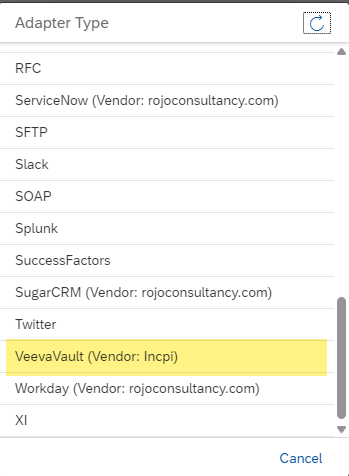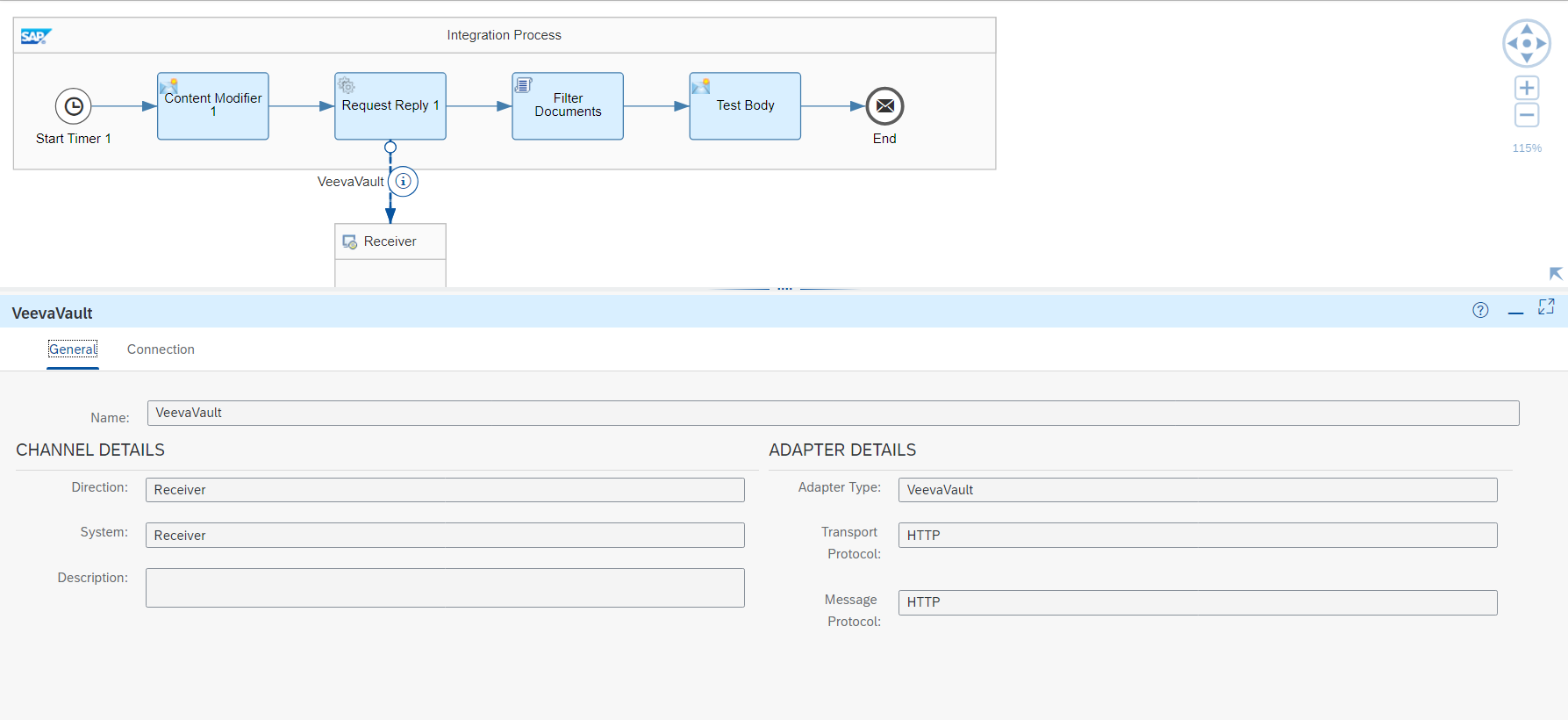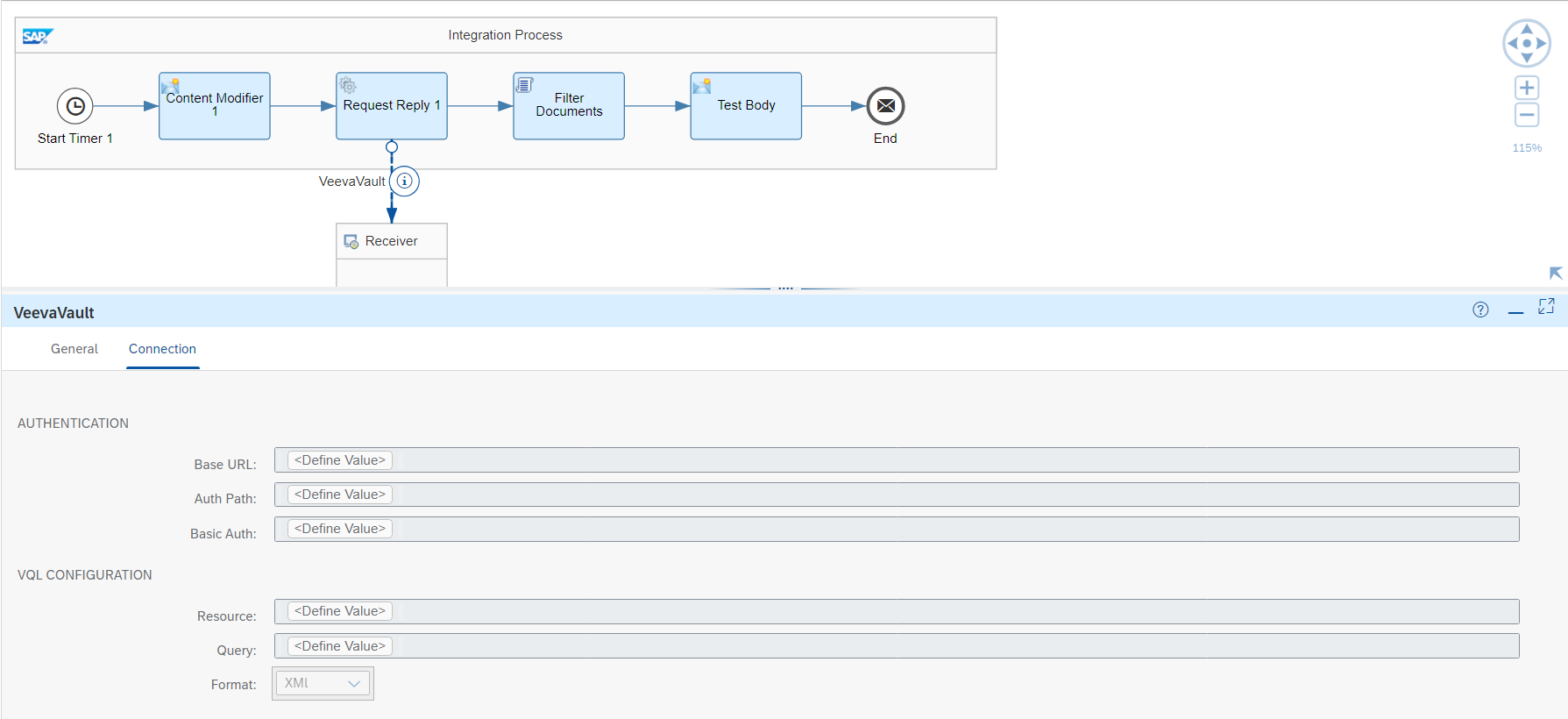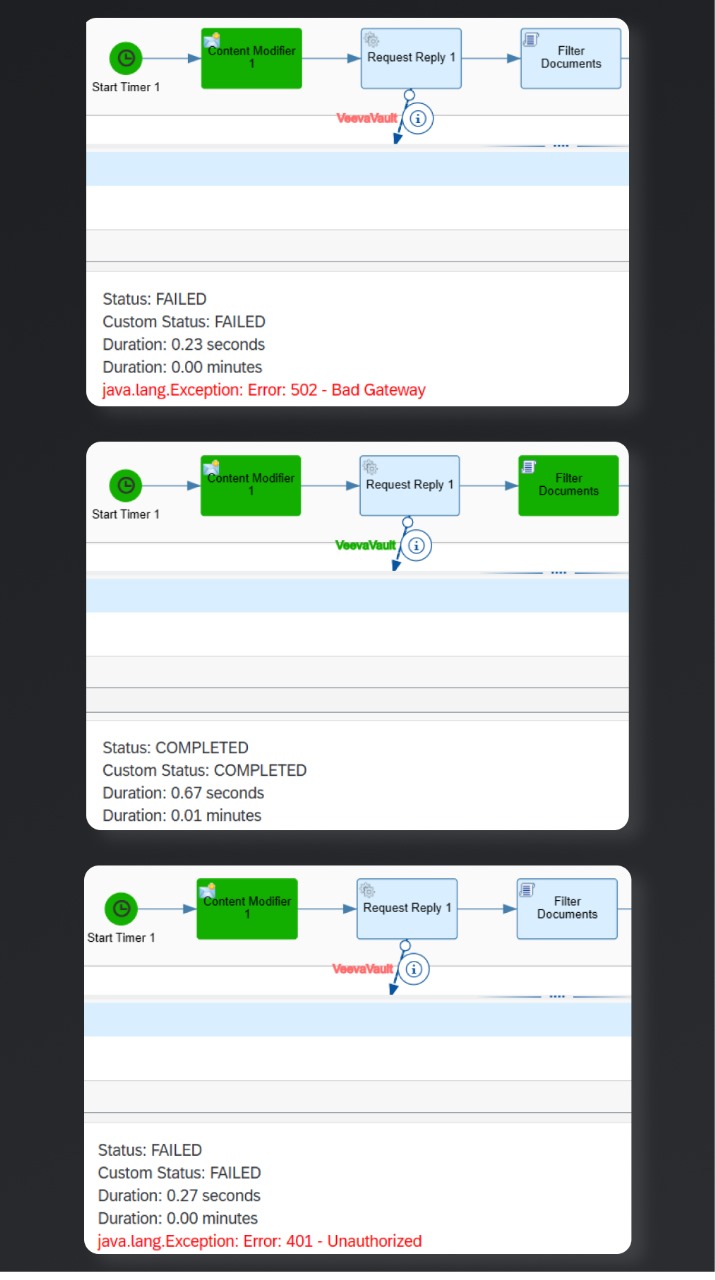Getting Started with the Veeva CPI Adaptor
The Veeva Custom SAP CPI Adaptor streamlines the integration between Veeva CRM and SAP ERP, offering a seamless solution for life sciences industry scenarios. This guide covers everything from installation to key features and limitations.
Benefits
The Veeva Custom SAP CPI Adaptor facilitates faster and more reliable integration between Veeva CRM and SAP ERP, eliminating manual authentication and ensuring data accuracy across systems.
Key advantages include:
- Business Process Efficiency: Supports scenarios like order management, inventory control, pricing, billing, and customer master data management.
- Scalability and Security: Leverages the SAP Cloud Platform Integration service, offering a secure and scalable cloud-based solution.
- User-Friendly Interface: Simplifies configuration and monitoring, enabling easy troubleshooting and maintenance.
Installation
Installing the Veeva Custom SAP CPI Adaptor requires access to the SAP Cloud Platform Integration tenant and Veeva CRM. Here's a step-by-step overview:
- Download and Import: Obtain the adaptor package (.esa file) from GitHub and import it into your CPI tenant.
- Configure Connection Parameters: Set up endpoint URLs, authentication credentials, and message mapping rules for Veeva CRM and SAP ERP. Follow the provided configuration guide for detailed instructions.
- Activate Integration Flows: Enable the relevant business scenarios and use the monitoring dashboard to track integration status and logs.
Limitations
As of version 1.0.0, the Veeva Custom SAP CPI Adaptor primarily supports data fetching via POST requests for authentication from Veeva. Update operations on Veeva might not yield the expected results and should be approached with caution.
Features & Development
V1.0.0
- Veeva Authentication: Supports basic authentication, securely stored using SAP CPI security material. Once authenticated, the adaptor can execute subsequent VQL queries.Note: The
test_veeva_server.jsfile is a locally hosted web server designed to simulate Veeva responses for testing purposes.
Connection After Deployment
 The Connection After Deployment screenshot shows the adaptor's successful deployment and integration with Veeva CRM and SAP ERP. This snapshot demonstrates how the system displays connection statuses and active integrations, ensuring that everything is set up correctly.
The Connection After Deployment screenshot shows the adaptor's successful deployment and integration with Veeva CRM and SAP ERP. This snapshot demonstrates how the system displays connection statuses and active integrations, ensuring that everything is set up correctly.
Configuration
 The Configuration image highlights the detailed setup process. It provides a visual guide to configuring the adaptor’s settings, including endpoint URLs and authentication parameters. This ensures that users can follow the setup instructions accurately.
The Configuration image highlights the detailed setup process. It provides a visual guide to configuring the adaptor’s settings, including endpoint URLs and authentication parameters. This ensures that users can follow the setup instructions accurately.
General TAB of Adaptor
 The General TAB provides insights into the connection details in SAP CPI. This screenshot illustrates how users can view general settings
The General TAB provides insights into the connection details in SAP CPI. This screenshot illustrates how users can view general settings
Connection TAB of Adaptor
 The Connection TAB of the adaptor offers an overview of key settings and options available within the adaptor. This screenshot illustrates how users can manage and view connection settings, which are crucial for the adaptor’s operation.
The Connection TAB of the adaptor offers an overview of key settings and options available within the adaptor. This screenshot illustrates how users can manage and view connection settings, which are crucial for the adaptor’s operation.
Test-results in short
 The Test Results image represents the extensive testing conducted for the Veeva CPI Adaptor. Although the results include various response codes (401, 502, 200), it demonstrates the adaptor’s ability to handle different conditions and perform reliably.
The Test Results image represents the extensive testing conducted for the Veeva CPI Adaptor. Although the results include various response codes (401, 502, 200), it demonstrates the adaptor’s ability to handle different conditions and perform reliably.
Privacy and Data Protection
The Veeva CPI Adaptor prioritizes your privacy, ensuring that no personal data is collected. Key points include:
- No collection of personal data.
- No transmission of URLs, tenant names, or iFlow names.
- Data remains secure unless explicitly exposed within SAP CPI.
Notice
End of article.